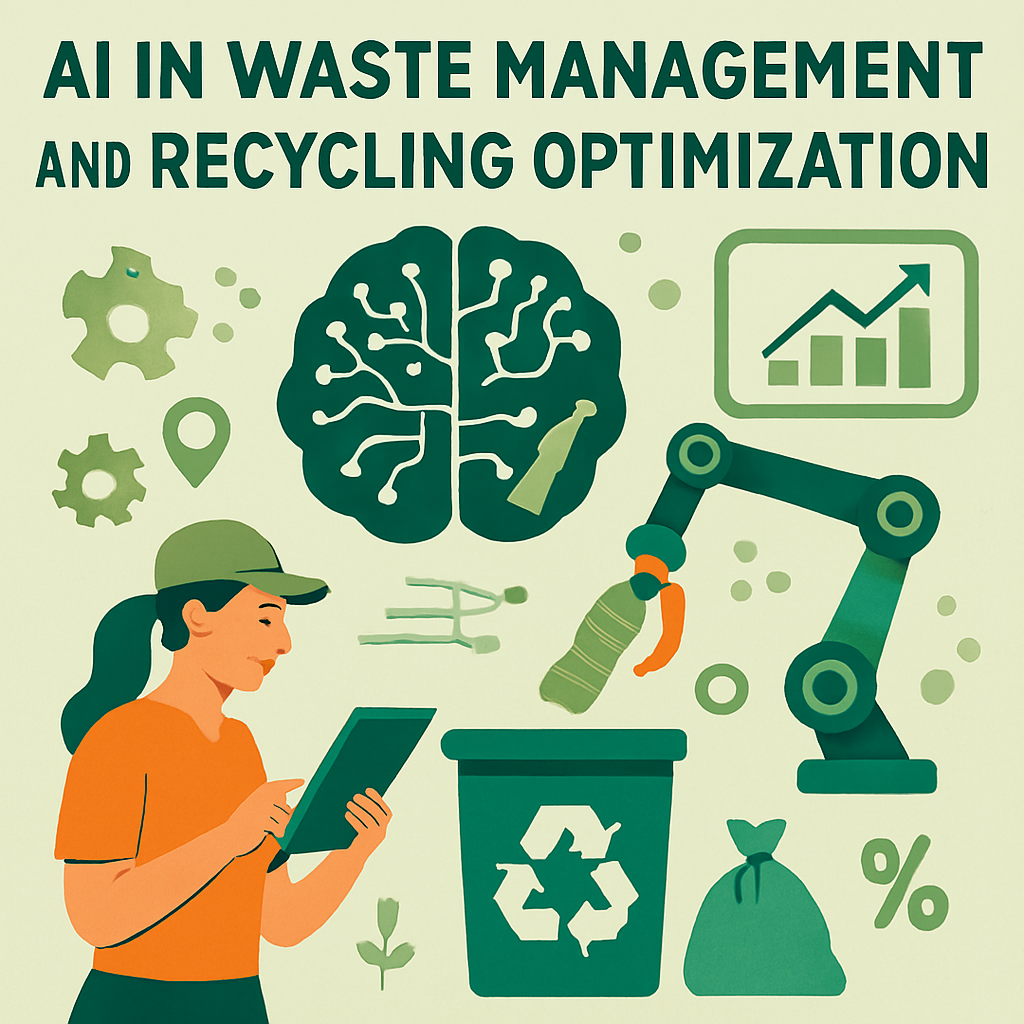
Effective waste management and recycling are essential for addressing the global waste crisis and promoting sustainability. Artificial Intelligence (AI) is revolutionizing the waste management sector by optimizing operations, improving recycling efficiency, and enabling smarter decision-making.
One of the most significant challenges in recycling is the accurate sorting of waste. AI-powered systems equipped with sensors and cameras can identify and categorize different types of materials, such as plastics, metals, glass, and organic waste.
Machine learning algorithms analyze images of waste items on conveyor belts in real time, ensuring accurate sorting and minimizing contamination in recycling streams. Robots equipped with AI can then pick and sort these materials with precision.
AI is improving waste collection by predicting when bins will reach capacity. IoT-enabled smart bins equipped with sensors communicate fill levels to AI systems, which then optimize collection routes for waste trucks. This reduces fuel consumption, lowers operational costs, and minimizes carbon emissions.
AI tools are helping to maximize recycling efficiency by analyzing data to identify bottlenecks in recycling processes. These tools optimize operations in recycling facilities, such as shredding, melting, or chemical processing, ensuring minimal waste and maximum recovery of valuable materials.
AI models detect and remove contaminants that degrade the quality of recyclable materials. By identifying impurities early in the recycling process, AI helps ensure higher-quality outputs, making recycled materials more marketable and sustainable.
AI-powered platforms engage communities by providing real-time feedback on recycling habits. For instance, apps can scan items to determine if they are recyclable and provide instructions on proper disposal, encouraging better waste management practices.
AI is opening the door to innovative waste management solutions, such as using advanced robotics to handle hazardous materials or creating circular economy systems where waste is transformed into valuable resources.
AI is transforming waste management and recycling by improving efficiency, reducing costs, and fostering sustainability. With these advancements, we can move closer to a zero-waste future, addressing environmental challenges and promoting a cleaner, greener planet.
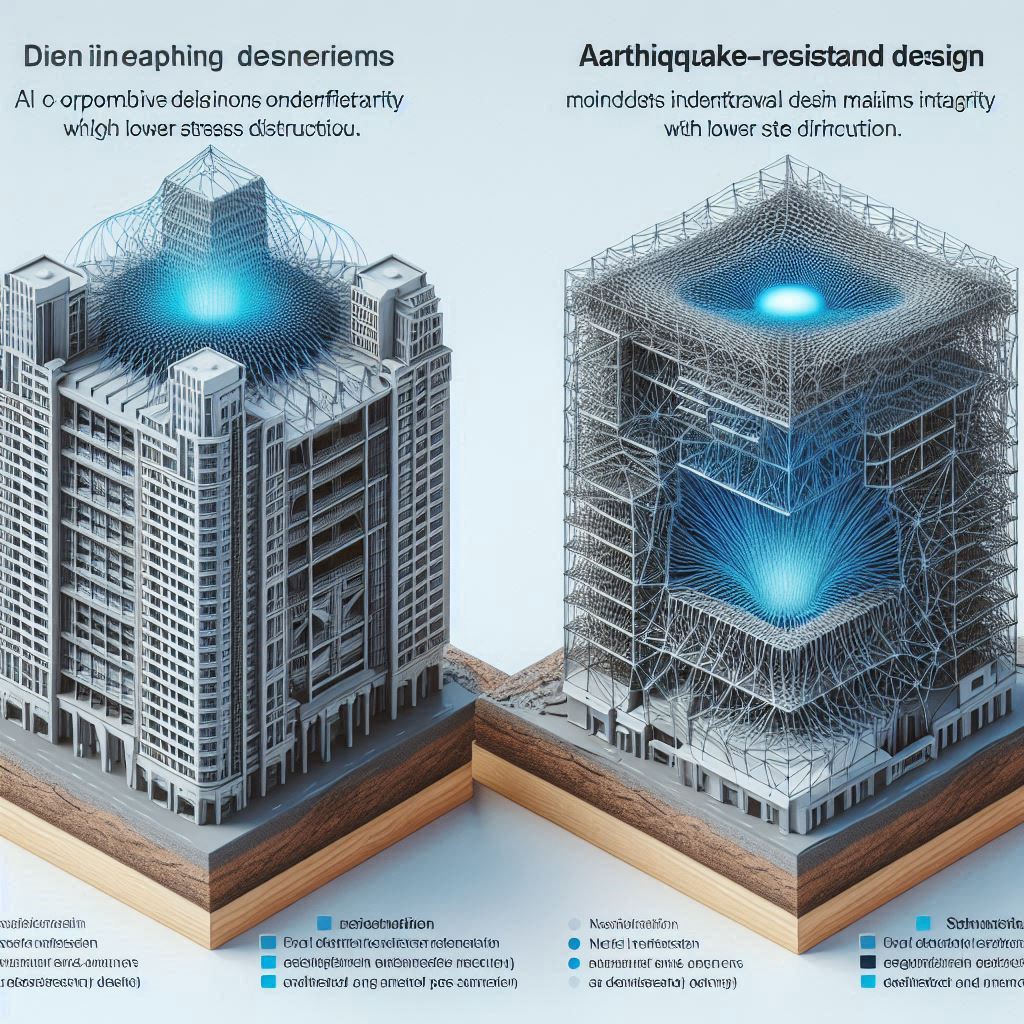
Sustainable architecture focuses on designing buildings that minimize environmental impact while maximizing energy efficiency and resource utilization. Artificial Intelligence (AI) is revolutionizing sustainable architecture by providing innovative tools to optimize design, improve energy efficiency, and ensure environmental harmony.
AI-powered design tools use algorithms to create optimized building layouts that reduce energy consumption and enhance sustainability. These tools analyze factors like sunlight exposure, wind patterns, and thermal insulation to generate designs that maximize natural ventilation and lighting.
For example, AI can simulate how a building will interact with its environment throughout the year, enabling architects to make data-driven decisions.
AI helps architects design buildings that consume less energy by:
By analyzing historical and real-time energy usage data, AI enables the creation of energy-efficient systems tailored to specific buildings.
AI systems analyze material properties and lifecycle impacts to recommend sustainable and cost-effective materials. These tools ensure that buildings are constructed using renewable, recyclable, and energy-efficient materials.
AI also optimizes resource allocation during construction, reducing waste and minimizing environmental impact.
AI is integral to creating “smart buildings” that monitor and adapt to occupant behavior in real time. These technologies adjust lighting, temperature, and ventilation based on usage patterns, ensuring maximum comfort with minimal energy use.
Smart buildings powered by AI also support predictive maintenance, reducing downtime and extending the life of building systems.
AI tools provide architects with insights into how their designs will affect the local environment. By analyzing factors like water runoff, air quality, and biodiversity, AI ensures that buildings coexist harmoniously with nature.
AI supports urban planners in designing sustainable cities by analyzing population growth, transportation systems, and resource distribution. This holistic approach ensures that green buildings contribute to a larger, sustainable urban ecosystem.
AI is driving a new era of sustainable architecture by empowering architects to design green buildings that are energy-efficient, environmentally friendly, and resource-conscious. As AI technology continues to evolve, it will play a critical role in shaping the future of sustainable cities and promoting global environmental stewardship.

Bridge design has always been a complex and challenging engineering discipline. The need to balance functionality, aesthetics, and safety while addressing environmental and economic constraints requires innovative approaches. Artificial Intelligence (AI) and Big Data are revolutionizing bridge design by offering advanced tools to enhance accuracy, efficiency, and sustainability.
Selecting an appropriate site for bridge construction is critical. Big Data combined with AI enables engineers to analyze factors such as:
These insights help engineers determine optimal bridge locations and designs that minimize risks and costs while maximizing functionality.
AI-powered algorithms assist in generating optimized structural designs by simulating various scenarios. Engineers can input design requirements, and AI tools will suggest configurations that minimize material usage while maintaining structural integrity.
For example, machine learning models analyze historical data from existing bridges to recommend designs that can withstand specific loads, wind forces, and seismic activities.
AI enhances bridge safety by integrating sensors and IoT devices that collect real-time data on:
Big Data analytics processes this information to predict maintenance needs and prevent failures, ensuring the longevity and safety of bridges.
AI supports sustainable bridge design by recommending eco-friendly materials and energy-efficient construction methods. Engineers can evaluate the environmental impact of their choices, such as reducing carbon footprints during construction and incorporating renewable energy systems.
AI and Big Data play a pivotal role in risk assessment, analyzing potential hazards like flooding, earthquakes, or extreme weather conditions. By simulating these risks, engineers can develop robust mitigation strategies, ensuring bridges remain resilient under adverse conditions.
AI-driven automation is transforming construction processes, from robotic assembly of components to real-time project management. Big Data ensures efficient resource allocation, reducing costs and project timelines.
AI and Big Data are revolutionizing bridge design by improving decision-making, enhancing safety, and promoting sustainability. By leveraging these technologies, engineers can create smarter, more resilient, and environmentally friendly bridges that meet the demands of the 21st century.

Efficient project scheduling and resource allocation are critical for the success of any project, especially in complex industries like construction, engineering, and energy. Traditional methods often struggle with delays, cost overruns, and resource mismanagement. AI-powered tools are transforming project management by enabling smarter, faster, and more efficient planning and resource utilization.
AI-powered tools analyze historical data, project requirements, and real-time updates to create optimized schedules. These systems can:
For instance, machine learning models can identify patterns in past projects to forecast how long specific tasks will take and suggest adjustments to meet deadlines.
AI enhances resource allocation by ensuring the right resources are assigned to the right tasks at the right time. This includes:
By balancing resource availability with project needs, AI minimizes bottlenecks and improves productivity.
AI-driven systems monitor project progress in real time, using data from IoT devices, sensors, and project management software. These tools provide:
AI tools help project managers optimize costs by analyzing resource utilization and identifying inefficiencies. For example:
AI enables project managers to simulate multiple scenarios and assess the impact of different decisions on timelines and budgets. This helps in proactive risk management by preparing contingency plans for potential issues.
AI-powered platforms streamline communication by providing a centralized hub where team members can access real-time updates, share data, and collaborate effectively. Natural Language Processing (NLP) capabilities summarize key information, ensuring stakeholders stay aligned.
AI-powered project scheduling and resource allocation are revolutionizing project management by improving efficiency, reducing costs, and enhancing collaboration. As AI technologies evolve, they will continue to drive smarter decision-making, enabling projects to be delivered on time, within budget, and to the highest standards.

Managing contracts and resolving claims are critical yet complex tasks in industries like construction, engineering, and energy. The traditional methods of handling these processes often involve manual reviews, lengthy negotiations, and potential disputes. Artificial Intelligence (AI) is revolutionizing contract and claims management by improving efficiency, accuracy, and decision-making.
AI-powered tools automate the drafting and review of contracts, significantly reducing the time and effort involved. By analyzing contract templates and legal documents, AI can:
Natural Language Processing (NLP) enables AI to understand legal language and provide actionable insights, reducing errors and improving contract quality.
AI systems analyze historical contracts and claims data to identify potential risks in new agreements. These tools flag clauses that may lead to disputes or financial exposure, enabling proactive risk mitigation.
For instance, AI can detect vague or contradictory language that could cause confusion, ensuring contracts are clear and enforceable.
AI improves the efficiency of claims management by automating tasks like:
By processing large volumes of data, AI ensures faster resolution of claims, reducing delays and minimizing conflicts.
AI uses predictive analytics to foresee potential claims based on project performance, contract compliance, and historical patterns. This enables organizations to address issues early, avoiding costly disputes and legal battles.
AI-powered platforms facilitate collaboration by providing a centralized space for all stakeholders to review contracts, track changes, and resolve disputes. AI can also simulate negotiation scenarios, suggesting strategies that achieve favorable outcomes.
AI ensures that contracts and claims comply with industry standards and regulations. Automated audit trails track all changes and actions, ensuring accountability and transparency throughout the process.
AI is transforming contract and claims management by streamlining processes, reducing risks, and improving accuracy. As these technologies advance, they will continue to enhance efficiency, reduce costs, and foster trust in complex contractual environments.

The energy market is a dynamic and complex ecosystem where supply and demand fluctuate constantly. Accurate predictions and efficient trading strategies are critical for maximizing profitability and ensuring a stable energy grid. Machine learning (ML) is revolutionizing energy trading by providing powerful tools for data analysis, forecasting, and decision-making.
Energy trading involves buying and selling electricity, natural gas, or renewable energy certificates in wholesale markets. Key challenges include:
Machine learning algorithms address these challenges by leveraging vast datasets to uncover patterns and make accurate predictions.
Machine learning models analyze historical price data, weather forecasts, and market trends to predict energy prices. Techniques such as time-series analysis and neural networks enable traders to:
For example, ML algorithms can predict hourly electricity prices, helping traders capitalize on price spikes or drops.
Accurate demand-supply forecasting is crucial for energy grid stability. Machine learning models process data from smart meters, IoT devices, and weather sensors to predict consumption patterns. This allows:
Machine learning supports the development of algorithmic trading systems, enabling automated and optimized trade execution. Reinforcement learning models, in particular, excel at:
Machine learning enhances risk management by analyzing market behavior and identifying anomalies. These systems can:
As renewable energy sources like solar and wind become more prevalent, machine learning plays a key role in managing their intermittent nature. By forecasting renewable energy production, ML algorithms enable efficient trading of renewable energy credits and certificates, fostering sustainability.
Machine learning algorithms are transforming energy trading by improving price forecasting, demand-supply predictions, and trading strategies. As the energy market evolves, ML-powered tools will become indispensable for navigating its complexities, driving profitability, and promoting a more sustainable energy future.
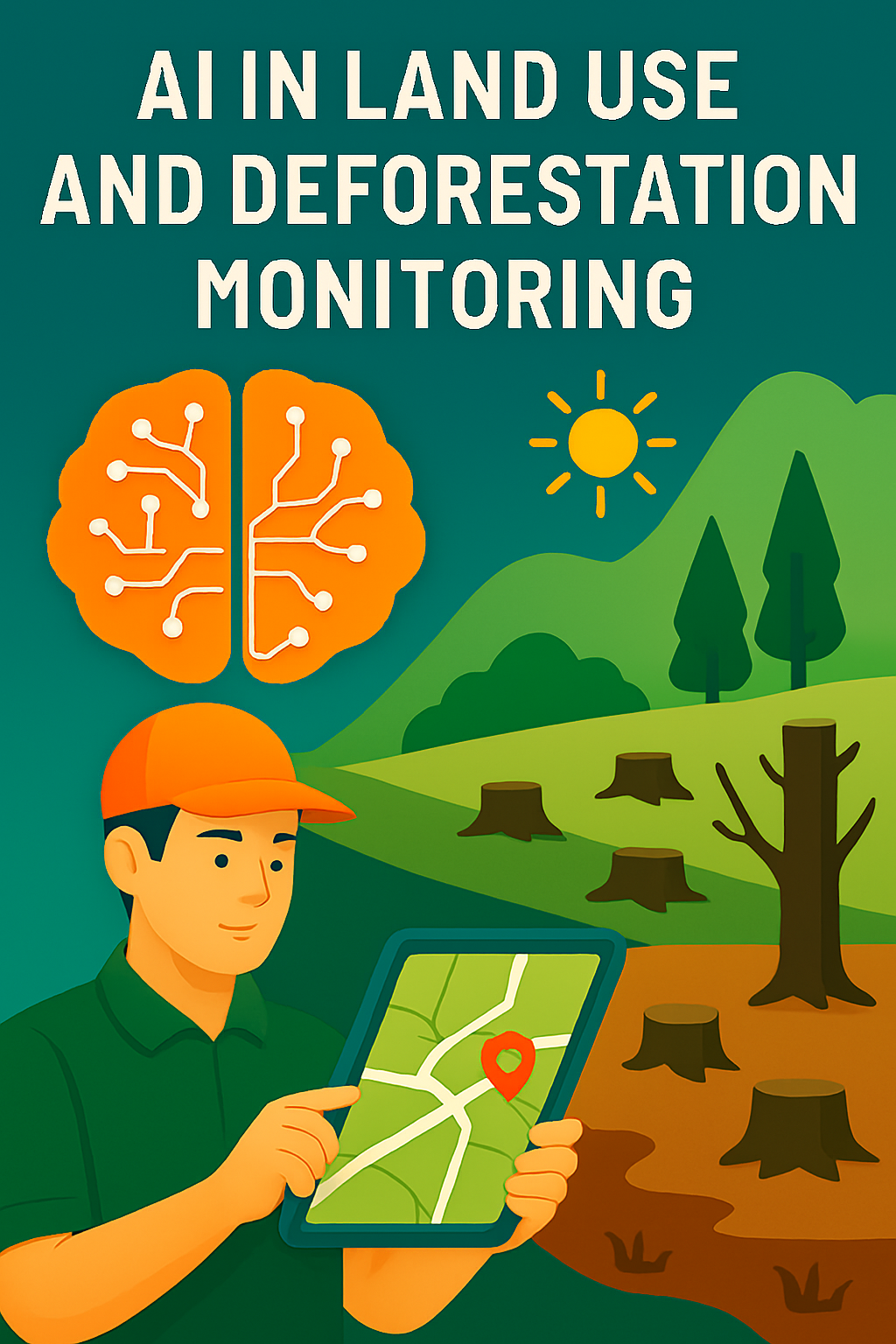
Here’s the article “AI in Land Use and Deforestation Monitoring” for your blog.
The growing concern over deforestation and unsustainable land use has heightened the need for innovative monitoring solutions. Artificial Intelligence (AI) is transforming land use and deforestation monitoring by providing real-time insights, predictive capabilities, and actionable data to combat environmental degradation effectively.
AI-powered systems analyze satellite imagery and aerial data to detect changes in land use in real time. By using machine learning algorithms, these systems can:
For example, AI tools can process high-resolution satellite images to identify tree cover loss and send alerts to authorities for immediate action.
AI enables the analysis of historical land use data, uncovering trends and patterns that inform future strategies. By processing decades of satellite imagery, machine learning models can:
AI systems use predictive analytics to assess the likelihood of deforestation in specific regions. These models consider factors such as:
This proactive approach allows governments and organizations to target high-risk zones with preventive measures.
AI provides policymakers with actionable data to make informed decisions. By presenting visualizations and detailed reports, AI tools help stakeholders:
AI-powered platforms facilitate public engagement by offering user-friendly tools for communities and activists. Interactive maps and dashboards allow users to:
AI ensures that land use decisions align with sustainable development goals (SDGs). By balancing environmental protection with economic growth, AI helps create solutions that benefit both people and the planet.
AI is revolutionizing land use and deforestation monitoring by providing advanced tools to track changes, predict risks, and support conservation efforts. As these technologies evolve, they will play a pivotal role in safeguarding ecosystems, mitigating climate change, and promoting sustainable land management.

The field of structural engineering is being revolutionized by artificial intelligence (AI), bringing
unparalleled efficiency, precision, and creativity to design processes. Structural design
optimization—a critical aspect of ensuring safety, functionality, and cost-efficiency—has
traditionally relied on iterative manual calculations and simulations. With AI, engineers can now
explore innovative solutions, streamline workflows, and achieve optimal designs faster than ever.
This article delves into how AI-powered structural design optimization works, its benefits, real-
world applications, and the challenges it presents.
How AI is Transforming Structural Design Optimization
Benefits of AI-Powered Structural Design Optimization
Challenges in Implementing AI in Structural Design
Real-World Applications of AI in Structural Design Optimization
The Future of AI in Structural Design
As AI technology advances, its role in structural design will expand further:
Real-Time Design Adjustments: AI tools integrated with IoT sensors will allow
structures to adapt in real-time to environmental changes, such as wind or seismic
activity.
Collaborative Design Platforms: Cloud-based AI systems will enable engineers,
architects, and contractors to collaborate seamlessly, sharing insights and optimizing
designs collectively.
AI-Powered Construction: Robots and 3D printers guided by AI will construct
optimized structures with unmatched precision.
Sustainability Metrics: Future AI tools will incorporate environmental impact
assessments directly into the design process, promoting more sustainable construction
practices.
Conclusion
AI-powered structural design optimization is revolutionizing the construction industry by making
structures smarter, safer, and more efficient. By automating tedious processes, enhancing safety,
and promoting sustainability, AI empowers engineers to tackle complex challenges and deliver
innovative solutions. However, to fully realize its potential, the industry must address challenges
such as data quality, skill gaps, and integration issues.
As AI continues to evolve, its transformative impact on structural engineering will only grow,
shaping the built environment of the future with intelligence and precision.
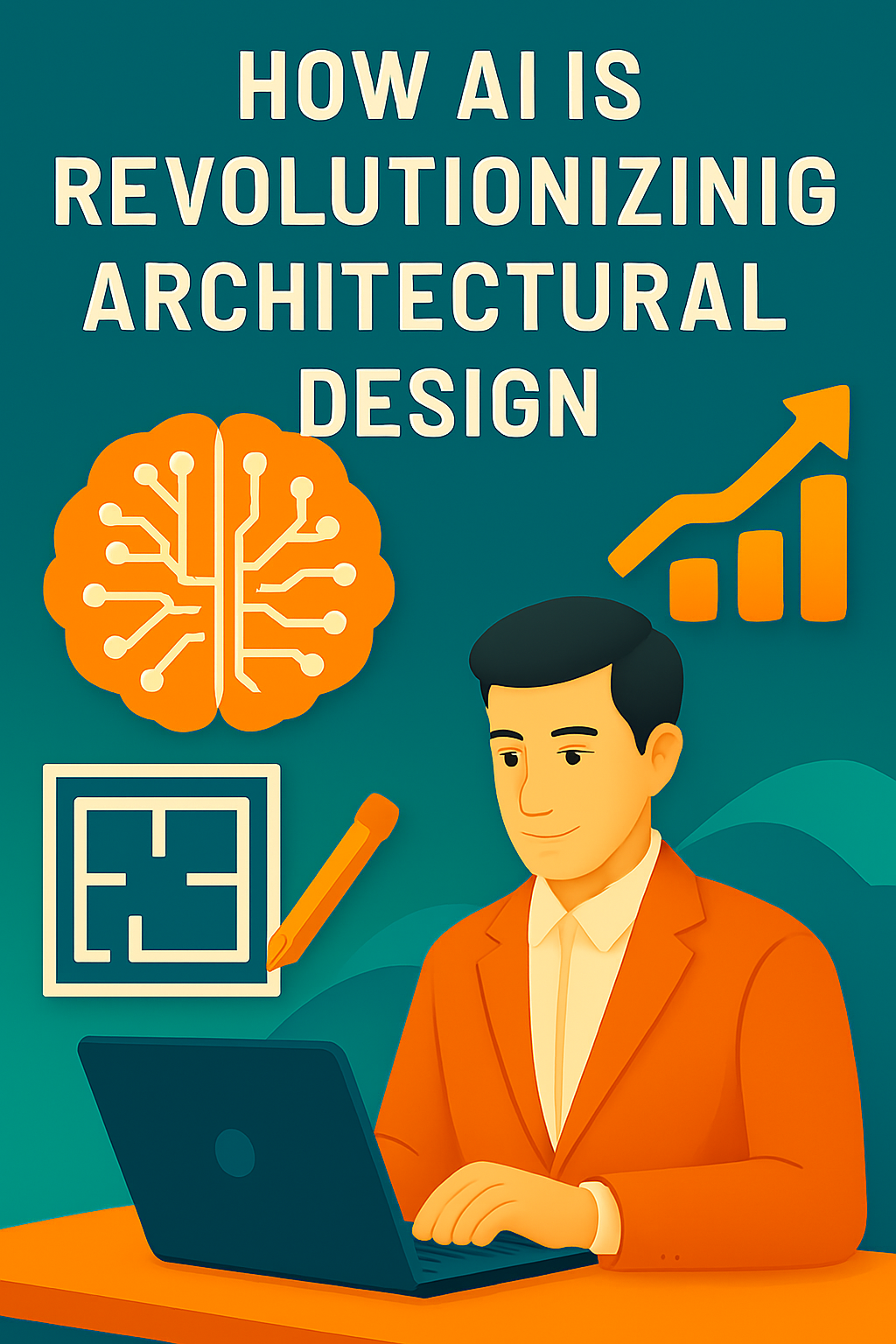
Artificial intelligence (AI) is no longer just a tool for tech-driven industries; it is transforming the
creative realms of architecture by introducing new levels of efficiency, precision, and innovation.
From concept generation to construction planning, AI is reshaping how architects approach
design, pushing the boundaries of what is possible.
This article explores the multifaceted ways AI is revolutionizing architectural design, the
benefits it offers, and the challenges that come with integrating this technology into a
traditionally human-centric field.
Applications of AI in Architectural Design
Benefits of AI in Architectural Design
Challenges of Integrating AI in Architecture
Case Studies: AI in Action
The Future of Architectural Design with AI
Looking ahead, AI will continue to shape architectural design by:
Personalized Architecture: AI can create designs tailored to individual client
preferences, using data on lifestyle, climate, and cultural context.
AI and Robotics Collaboration: Robots integrated with AI could construct complex
structures with precision and speed, reducing manual labor.
Smart Cities: AI will play a key role in designing smart cities, focusing on sustainability,
connectivity, and livability.
Autonomous Design Systems: Future AI tools may autonomously generate complete
designs, requiring minimal human input.
Conclusion
AI is revolutionizing architectural design by enhancing creativity, efficiency, and sustainability.
While challenges like cost and ethical considerations remain, the benefits of AI-driven design far
outweigh the hurdles. By embracing AI, architects can push the boundaries of innovation and
redefine the built environment for future generations.
As AI continues to evolve, its potential to reshape architecture will only grow, offering endless
possibilities for those willing to adapt and innovate.
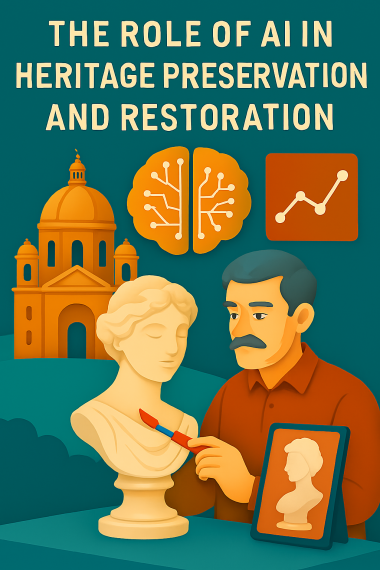
Heritage preservation and restoration are vital for safeguarding the cultural and historical identity
of societies. However, these tasks are often fraught with challenges, including the degradation of
materials, lack of documentation, and the sheer complexity of restoring ancient structures or
artifacts. Enter artificial intelligence (AI): a game-changing technology that is transforming how
we protect and restore our cultural heritage.
This article explores the various ways AI is revolutionizing heritage preservation, the benefits it
offers, and the challenges involved in implementing these advanced technologies.
How AI is Transforming Heritage Preservation and Restoration
Benefits of AI in Heritage Preservation
Challenges in Using AI for Heritage Preservation
Case Studies: AI in Action
The Future of AI in Heritage Preservation
As AI technology evolves, its role in heritage preservation and restoration will expand to
include:
Real-Time Monitoring Systems: IoT sensors integrated with AI algorithms will enable
real-time monitoring of heritage sites, detecting potential risks instantly.
AI-Driven Research: Advanced AI models will analyze massive datasets from
archeological sites to uncover new insights about ancient civilizations.
Collaborative Restoration Platforms: Cloud-based AI systems will facilitate
collaboration among preservationists worldwide, sharing data and techniques seamlessly.
Cultural Storytelling: AI will generate interactive and personalized narratives around
heritage sites, making history more engaging and educational.
Conclusion
AI is playing a pivotal role in the preservation and restoration of cultural heritage, addressing
challenges that once seemed insurmountable. By combining the power of machine learning, 3D
modeling, and predictive analytics, AI not only protects our past but also enriches our
understanding of it. However, to fully realize its potential, we must address challenges like data
limitations and ethical concerns.
As we look to the future, AI’s ability to bridge the gap between technology and tradition offers
hope for preserving our shared history for generations to come.